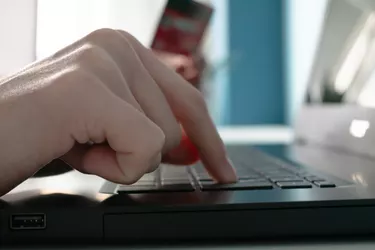
Paying bills using automatic withdrawals from your checking account is convenient and can help you avoid the missed and late payments that damage your credit. However, an automatic withdrawal from a checking account can cause overdrafts if you don't have enough cash to cover a bill. If you decide it's best to stop these payments, you'll need to determine how they were initiated – through your bank or through the website of the company that's receiving the payments.
Identify the Payee and Source
Video of the Day
Determine if you set up the automatic payment from the payee's website or from your checking account. For example, you might have created an online account for a credit card and scheduled automatic payments from there. Or you might have scheduled automatic withdrawals by logging into your online checking account and setting up automatic bill payments from that end.
Video of the Day
Find a copy of your credit card statement, student loan invoice, cable bill, auto payment invoice, insurance premium bill or other document related to the payment you want to stop if you set up the withdrawal from the payee's website. Look for both the phone number and website address associated with payments.
Do so approximately seven days before your payment is due to determine if you have a limited time for stopping automatic payments. This usually has to be done at least 72 hours in advance of the due date.
Research Stopping Automatic Payments
Visit the website of the creditor that is going to automatically bill you if you set up your payments from its website. Navigate your way to the area of the website related to payments. See if you can cancel all transactions at one time or if you need to cancel multiple transactions individually. Review the differences between canceling one transaction, canceling all automatic withdrawals and changing the date or amount of a withdrawal.
Cancel Automatic Withdrawal from Checking Account
Follow the directions for canceling an automatic payment, which might offer the option to change the payment date or amount, change the bank or cancel the transaction completely. Wait for a confirmation notification to appear on screen that your payment was successfully canceled. Take a screen shot of the notice, print the page or write down the confirmation number.
Verify the Automatic Withdrawal Cancellation
Call the customer service number of the creditor to confirm that you correctly canceled your payment. Get the name of the customer service representative you speak with, his ID number and a confirmation number for the cancellation of your transaction. Visit the website in 24 hours or so to verify the payment was canceled.
Contact your bank if you cannot determine that you have successfully canceled a transaction and let the bank know which transaction you want canceled. Explain that you are withdrawing authorization for the withdrawal if you are worried that your creditor might not honor your cancellation request.
Have your bank statement available with the information from previous automatic payments. Provide the bank with the creditor's name, address and your account number or any identifying information from your bank statement. This type of cancellation can result in damage to your credit if a creditor processes a payment and your bank denies it; this is just like bouncing a check with a paper transaction.
Follow Up With Request Online
Log onto your online checking account if you set up the direct withdrawal from your bank account rather than at a creditor's website. Follow the directions at your bank's website to stop an automatic withdrawal, get confirmation of the cancellation via a screenshot or by writing down a confirmation number, and then call the bank to confirm you correctly stopped the payment. You might need to fill out a form the bank requires for this process and then mail or fax it to the bank. Don't forget to reschedule any payment you cancel if it's one you need to make later or from another account.